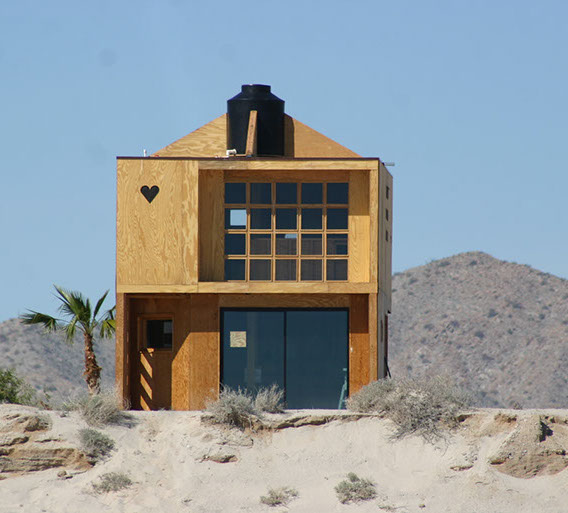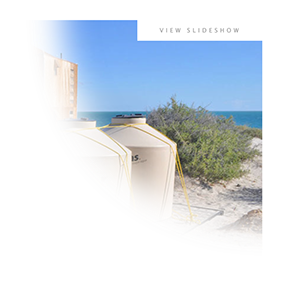HOME
Introduction
A dilapidated trailer sitting under a forlorn palapa on top of a sand dune overlooking a magnificent sweep of the coastline of the Sea of Cortez—this was what one of the sights that greeted us on our first visit to Campo Cadena, Baja California, Mexico in 2003. Somebody said it was for sale for $5,000. Abby and I looked at each other and said: why not? We called at the home of the current custodians of the property, a nice couple of retired gringos who lived in a beach house a little to the South, and the deal was done.
What we had purchased, of course, were the improvements, such as they were—the trailer, the palapa, the water tank, and all the rest—but not the land itself. This remained in the possession of the Cadena family who were the owners of a tract of land abutting the coastline for about a quarter of a mile, and stretching back past the main road a mile or so into the desert, right up to the base of the mountains to the West. Parcels of this land are leased chiefly to Americans for vacation homes—part of an archipelago of beach houses extending from the Southern boundaries of San Felipe half-way towards Puertecitos to the South. This skein of dwellings, quite dense in places, becomes sparser as one travels South.
At first, we had only the vaguest idea about what to do with the site. Our efforts during the first six months were directed to cleaning up what was, alas, a bit of an eyesore. We contacted one of the locals who was willing to tow away the barely habitable trailer, and the former tenants obligingly removed the wreck of a catamaran and an old Jeep from the premises.
Our initial visit to the Campo had been at the invitation of and old friend, Richard, who had years ago built his own house nearby. Around the campfire there was talk about using his building and the adjacent building as a retreat, or healing facility. Although the environment was amazing, the buildings lacked the kind of plumbing that would be needed for a comfortable stay.
Years later—thanks to the hard work of Richard and a few others—there now stands a building whose plumbing is quite adequate, although the house itself is still far too small to serve as a retreat facility. Sixteen feet long, sixteen feet wide and standing sixteen feet tall, the Cube is barely large enough to qualify as a house. And yet one does not feel confined in it. The magnificent view of the sea with its extreme tides and constantly changing surface, the rise of the sun and moon and the boundless stars all give a sense of space that goes beyond the limits of its walls.
The story of how this unusual building came to be is told in more detail in other pages of the website. We invite you to share in our accomplishments and learn from our mistakes. Very much a work in progress, the Cube, its structures and its systems are continuously being tweaked with the goal of attaining the Nirvana of an off-grid visitor-friendly destination for adventurous souls who nevertheless appreciate a certain degree of comfort and security.
—John and Abby Odam

[above] A pristine Cube at the moment of completion in 2004. Note the small palm tree—one of two which survived less than six months—and the absence of the Internet satellite dish on the roof
ABOUT THIS WEBSITE
This website is designed to be viewed on a large desktop computer monitor. It may still be readable on a laptop or even a tablet, but it is basically unaccessible on a phone or small hand-held device.
Here are some features that you might not have noticed at first:

SLIDESHOWS
There are hundreds of images on some of the pages. So to prevent tedious vertical scrolling many of them have been collected into slideshows which display large numbers of them in a horizontal sequence.
Click on the button that appears in the corner of some photos.
POP-UP TIMELINES
Timelines describe events in chronological sequence above and below a bar showing dates. Each caption has a small gray dot beside it. Clicking this dot brings up an image to illustrate the text. Clicking another dot causes the image to disappear and a new one to take its place. Clicking the browser refresh hides all images.

